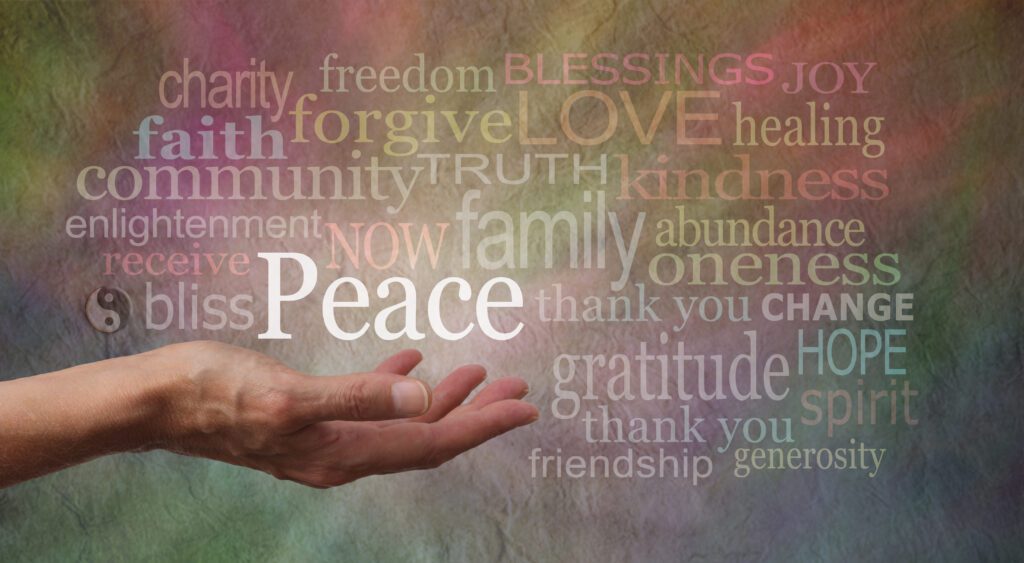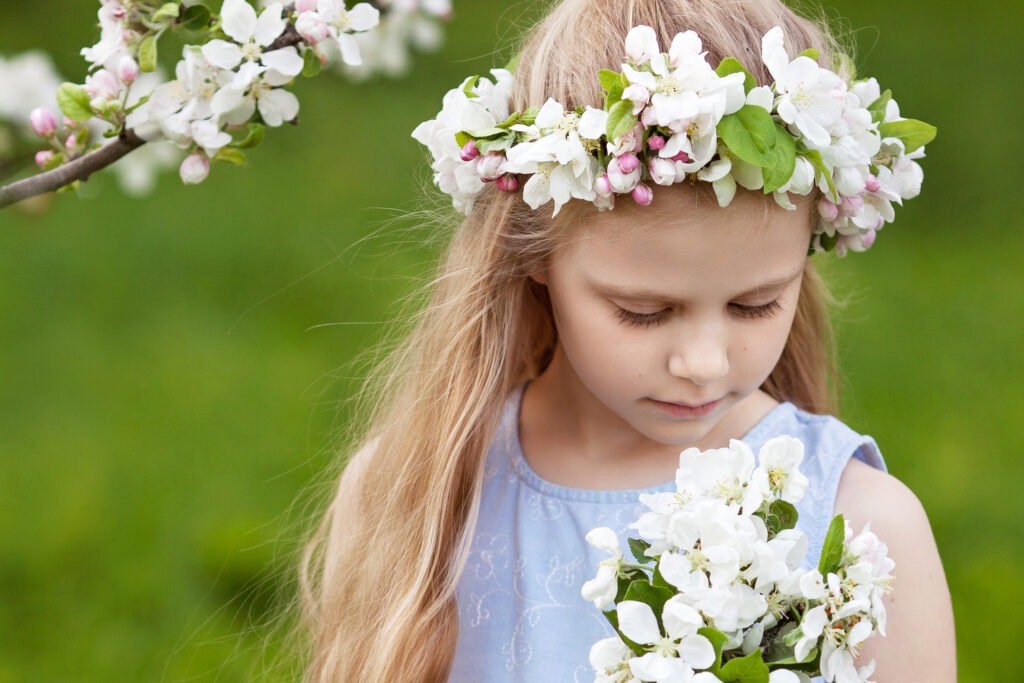Imbolc traditions and Brigid are the cornerstone of living seasonally in February. This is a season of renewal, transformation, and preparation for the coming spring.
This is a time to prepare for the year ahead and it’s also a time to ground yourself. It’s still winter, and the world is still gripped in its icy slumber. But all around you, there are subtle stirrings of spring.
This is the season of Imbolc traditions and the goddess Brigid. The celebration of transformation. It’s also the celebration of new beginnings. Of wisdom and patience, and of the power of being still and silent to prepare for times ahead. As the first of three fertility festivals, imbolc is also a time to honor femininity.
At the heart of Imbolc stands Brigid. She is a powerful Celtic goddess of compassion. Known as the goddess of fire, poetry, and healing, Brigid embodies the themes of the season, offering inspiration and hope to those who seek her blessings. Imbolc is a time to honor Brigid and to align ourselves with the energies of renewal and preparation.
In this blog, we’ll explore imbolc, Brigid’s role, and how you can embrace the energy of the season. We’ll explore the themes of renewal, wisdom, and femininity and learn how to incorporate them into your homemaking and writing journey.
The Meaning Of Imbolc Traditions and Brigid’s Role

Imbolc is a sacred Celtic festival that marks the midway point between Yule and Ostara on the wheel of the year. This ancient celebration is deeply tied to seasonal change, renewal, and fertility. While the world is still gripped in winter’s chill, Imbolc traditions recognize the subtle signs of spring’s return—longer days, the first blooms of snowdrops and crocuses, and the slow warming of the earth.
Historically, Imbolc was a time to honor nature, paying close attention to seasonal shifts and agricultural cycles. In pre-Christian Europe, this festival was linked to Brigid, the Celtic goddess of fire, healing, and poetry. When Christianity spread, Imbolc became Candlemas, and Brigid became Saint Brigid.
Today, many modern pagans celebrate Imbolc and Brigid by lighting candles, preparing seasonal foods like dairy and root vegetables, and setting intentions for renewal and transformation. This sacred time invites us to embrace the changing seasons, clear away stagnant energy, and welcome new beginnings—both in our homes and in our personal journeys.
Modern Imbolc Traditions
In modern times, technology may have separated us from nature and agriculture. But living seasonally compels us to reconnect to the world. We are still part of nature. It’s important to spiritual health that we keep this connection even if we live in modern cities. There are many ways to honor nature and honor agriculture, just as our ancestors would have done. Check out my 2025 guide to Living Seasonally.
Imbolc Traditions and Brigid: Ways to Honor the Goddess
Imbolc, as a Celtic festival, is associated with the goddess Brigid. She is the goddess of fire, poetry, healing, fertility, and wisdom. She embodies feminine energy and is a perfect guide during this time of renewal and preparation. Honoring Brigid at Imbolc is about celebrating this time of the season with intention. It’s about embracing the feminine powers of creativity, transformation and nurturing strength. And as a fertility goddess, Brigid also embodies what it means to be a woman.
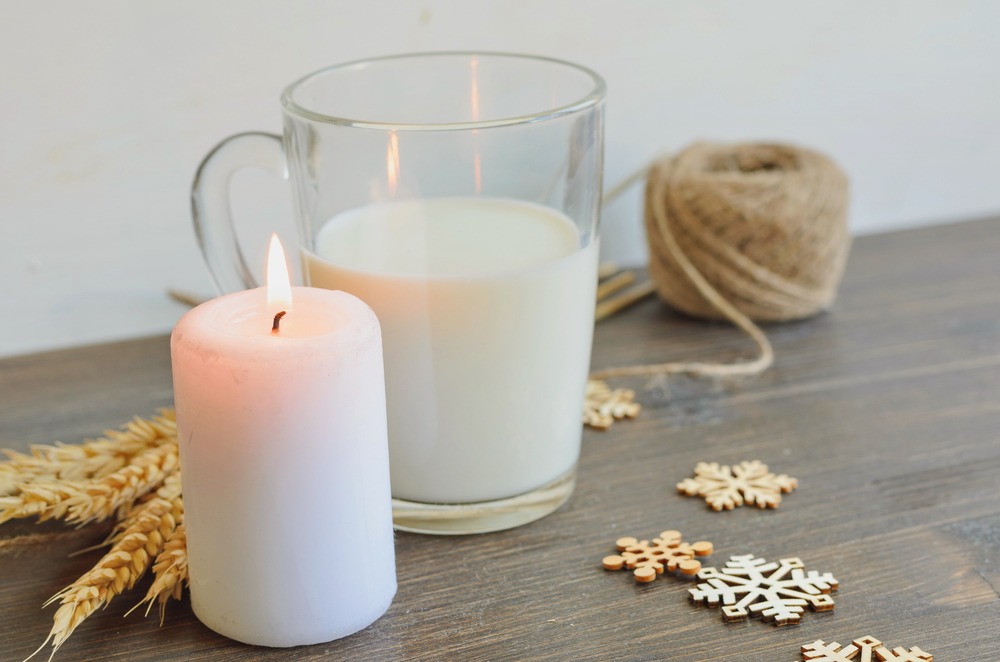
Imbolc Traditions And Brigid’s Sacred Symbols
Brigid’s symbols and correspondences revolve around her dual nature as a fire goddess, a fierce protector of her children, and also a gentle nurturer, full of wisdom.
Fire and Light
Fire represents both the fierceness of Brigid’s protective nature and the warmth of the hearth. White candles with a flame are powerful symbols of Imbolc and the goddess.
Poetry and Wisdom
Brigid is the patron goddess of wisdom and storytelling. She is the goddess of bards who sing and those who share their wisdom with others.
You can honor Brigid and the season of imbolc by journaling about what you see around you. Write your thoughts, reflections, and feeling as you consider this time of year. What does winter mean to you? What does the approach of spring mean to you?
Healing and water
Brigid is also the goddess of healing and she is associated with the healing well, which is an important symbol in Celtic traditions. In ancient times, people would visit wells and leave offerings for Brigid. In modern times, taking an immersive bath would be a great way to honor the goddess. Cleanse yourself in her healing waters.
Animals and Plants
Some animals and plants associated with Brigid, and Imbolc include ewes. The ewe is a symbol of fertility. Crocus and snowdrops are also symbols of the season. These flowers are often the first to bloom. In some places as early as January. So they are heralds of spring.
Bringing Imbolc Traditions and Brigid into Your Homemaking Rituals

When considering how to incorporate the goddess into daily rituals during this season, consider meaningful activities that give you and those around you peace. Incorporate things that bring warmth and nurturing energy.
Light a candle in her honor
Every morning for the season, light a candle in the window. Don’t leave it unattended. Just let it burn for a short time while you go about your morning routine.
Brigid’s Cross
A Brigid’s cross is a Celtic symbol of Brigid. Host a crafting day for your children where they can all create the crosses out of straw. Hang them in the kitchen or on the door. They represent protection and renewal.
Milk
As a fertility goddess, milk is a symbol of Brigid. It’s also a symbol of the season of Imbolc. Put milk in a basin on your altar as an offering.
How Homemakers Can Celebrate Imbolc Traditions and Brigid
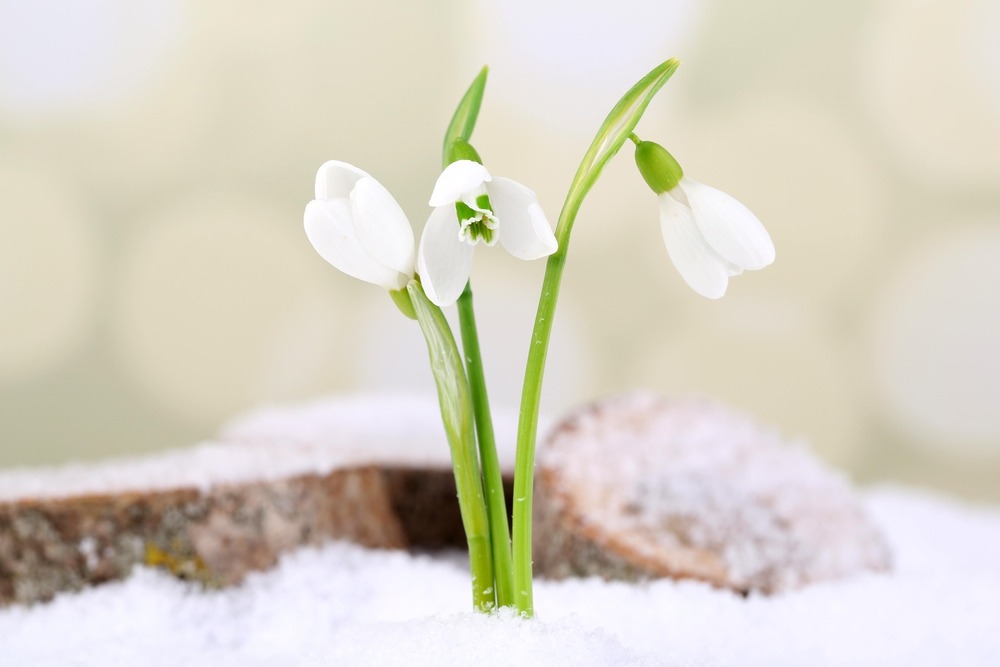
Now that we’ve learned about the goddess Brigid and how to incorporate her into the season of imbolc, we can talk about the symbols and rituals of imbolc.
Honor the light
Light candles often to honor the light. Candles are the theme. They represent hearth and warmth. Use purple, pink, and red color schemes in your decor. Keep some winter decor up to remind yourself that it’s still winter. Check out my article on Winter Home.
Milk and Cheese
Focus on seasonal eating on milk and dairy. Milk dishes like causes that contain cream, soft cheeses like feta and blue cheese, and hard cheese like cheddar. Make these foods part of a feast for your family. Include root vegetables like potatoes and turnips. Herbs like rosemary, lavender, and chamomile are good to use, especially in teas and sweets.
Nature-based activities
Bring your celebration of imbolc outdoors when you can. Go on a nature walk and look for the signs of spring. Crocus and snowdrop plants might be visible. Look for birds that might be returning from their migrations. New shoots poking out from the snow. Don’t forget to acknowledge that it’s still winter. Enjoy some winter activities like snow sledding, etc.
These are all things to honor Imbolc in your daily life.
Imbolc Traditions and Brigid’s Inspiration for Writers
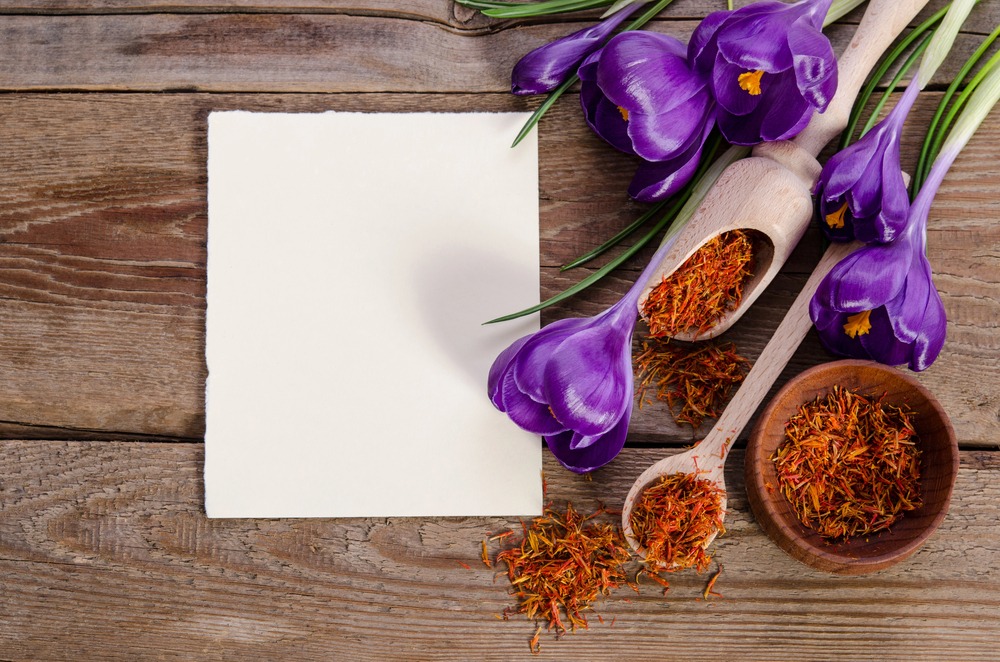
As a writer, imbolc offers themes of renewal that you can use to inspire your writing. Imbolc is the season of creative energy, it’s a perfect time to hone in on that. As Brigid is the goddess of poetry, wisdom and storytelling, she is a muse for writers. Use her as a guide to weave passion, purpose and depth into your writing.
Look at your current projects, or any new projects you are considering. Reflect on them and reflect on the season of stillness as you ponder them.
Emergence from Dormancy
During the lull between the chaos of the holidays and imbolc, your writing may have gotten stagnant and you might wonder how to freshen things up. Imbolc is a time of transition, from darkness to light. Mirror this in your writing.
Set Intentions for your work
What themes do you want to explore in writing? What avenues can you go down and what stories do you need to tell?
Writing as Ritual
Writing is a ritual. You can use it to set intention and manifest things you desire in your life. Just as nature stirs from its slumber, allow your own ideas to develop organically. Don’t pressure yourself, just let creativity flow.
Invoke Brigid before writing
Do an offering to Brigid before you write as part of your ritual. Light a white candle, set out a piece of charged amethyst or clear quartz, light some incense like lavender or vanilla, and meditate on the goddess and her blessings. Check out this brief article for an example: Here
Let your writing flow, don’t force it
Brigid’s energy is all about creation, not control. Allow intuition to guide your writing. Don’t think too hard. You can always go back and fix things later.
Word power
Learn how to paint with words. Use Metaphors to illustrate what you are trying to convey to your readers. Just as imbolc is a season of transformation, light, and renewal, look at how that translates to your writing. Your main character, what transformations do they go through throughout the course of the story?
Imbolc Traditions and Brigid-Inspired Writing Prompts

Here are some prompts you can explore. They can be journaling prompts or fictional prompts.
- What is awakening in my life, or the life of my MC? What subtle hints are manifesting themselves?
- What creative seeds should be planted and need to be nurtured this year?
- Describe a world emerging from a deep freeze. Perhaps a volcanic winter that has lasted decades. How do the people, creatures or landscape change?
- Write a poem about fire and light and warmth.
- What would Brigid say about your life, or your MC’s life right now?
Set an atmosphere and space for your writing
Make it a ritual to create a space just for writing. Make it a place of offerings for Brigid. Burn rosemary and lavender and light a white candle. Put a basin of milk or fresh bread on your desk as an offering.
Meditate for a few minutes before you begin your writing.
Embracing Imbolc Traditions and Brigid in Homemaking and Writing
Now that we’ve explored Imbolc and the Goddess Brigid, it’s time to put it all together. Incorporate this season into your homemaking and writing routine and amplify them both.
Imbolc is a sacred time. All seasons are sacred. Living intentionally and seasonally means taking time to reflect. As nature shifts and changes, you can mirror your life to reflect these changes.
This season, we are creating intention with our homemaking. Creating rituals and routines, cleaning and decluttering, bringing nature into our homes. BY setting out offerings for Brigid, by decorating with symbols of the season such as ewes and crocuses, we can embrace this time of year.
And by incorporating this into our writing, we can capture the season’s themes of transformation and renewal in our fiction writing and our journaling.
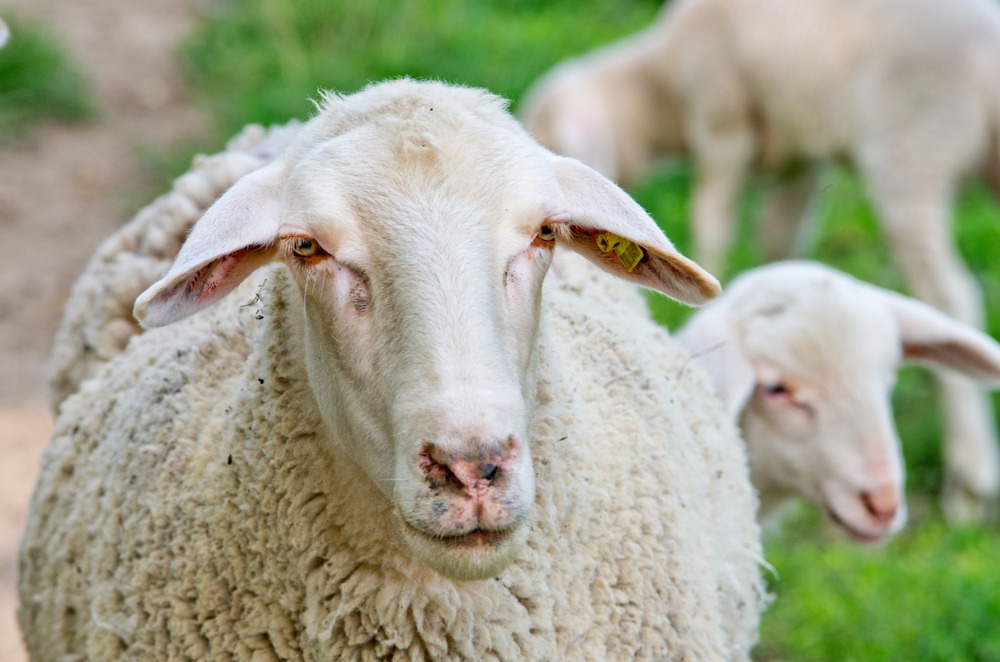
Imbolc Traditions and Brigid: Reflection, Renewal, and Inspiration
Imbolc is a season of quiet reflection. It’s a time to prepare for the year ahead while taking time to savor the stillness. The world is still gripped in winter’s chill, but signs of spring are visible.
It is a celebration of renewal and inspiration, of femininity and wisdom. It’s a time to embrace Brigid, her guiding energy and her healing powers.
How do you plan to embrace imbolc and Brigid this year? How do you plan to incorporate them into your homemaking and writing journey? Let me know in the comments.
And don’t forget to check out my related blog article on Winter Home and the 2025 guide to Living Seasonally.



